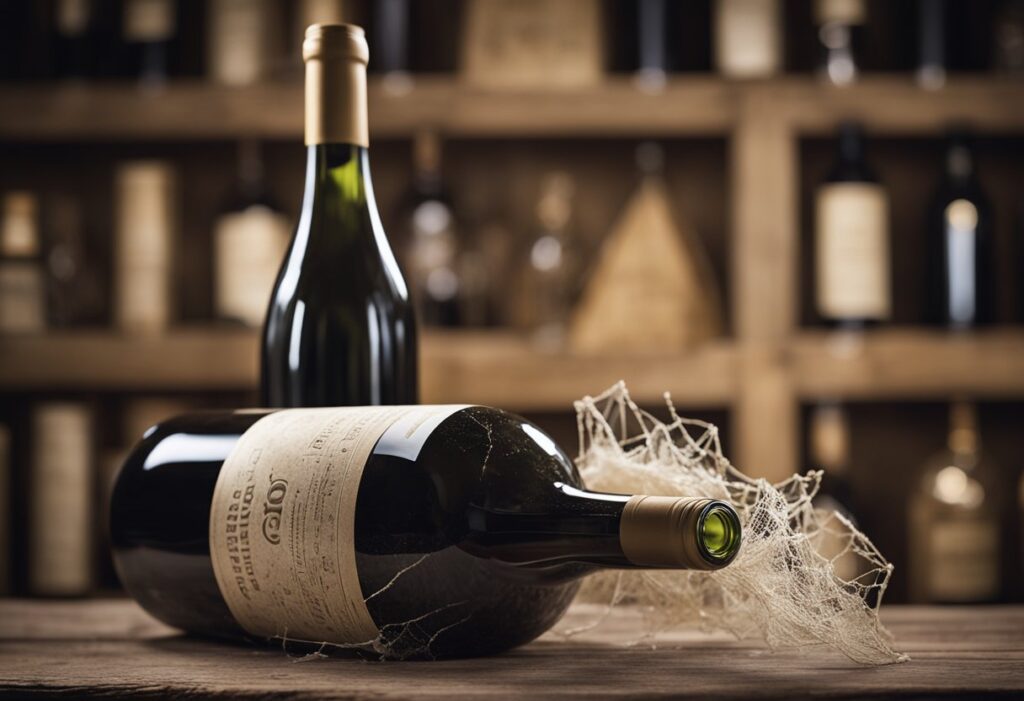Wine enthusiasts often ponder the question of whether wine can go bad, and it’s a topic surrounded by misconceptions. Yes, wine can go bad, and understanding the factors that lead to spoilage can help you avoid waste and disappointment. Whether you’ve found an old bottle at the back of your cupboard or you’re unsure how long your open bottle will last, this guide aims to clear up the confusion.
When discussing wine spoilage, it’s crucial to differentiate between wine that has simply aged and wine that has gone bad. While some wines improve with age, others are best consumed within a certain timeframe. Improper storage conditions, such as exposure to light or fluctuating temperatures, can accelerate the degradation process, leading to unpleasant flavours and aromas.
In this comprehensive guide, I will provide practical tips on how to store wine correctly, signs of spoilage to look out for, and how to make the most of your beloved bottles. By the end of this article, you’ll feel confident in your ability to keep your wine in perfect condition, ensuring you savour every drop.
Unveiling the Truth About Wine Spoilage
Wine spoilage can happen due to several factors, such as storage conditions and the type of wine. Identifying the signs of a compromised bottle is essential to ensure a good drinking experience.
Factors Contributing to Wine Deterioration
Several factors can lead to wine spoilage. Improper storage solutions are a significant contributor. Wine needs to be stored in a cool, dark place with a stable temperature. If not, it can age prematurely or develop undesirable characteristics.
Signs of a Compromised Bottle
Recognising the signs of a spoiled wine is crucial. Colour changes indicate spoilage. White wines may turn yellow or brown, while red wines can become brick-coloured. A strong vinegary smell, reminiscent of nail polish remover or rotten eggs, suggests that the wine has gone bad.
Taste changes are another red flag. Spoiled wine may taste excessively sour, bitter, or metallic. The presence of bubbles in still wine can indicate unwanted fermentation inside the bottle. This carbonation often results from bacterial contamination.
Lastly, a pushed-up cork can be a visual indicator. This typically means the wine was exposed to heat, causing expansion and pushing the cork out, allowing air to enter and spoil the wine. Always check for these signs before enjoying a bottle.
Preventive Measures and Proper Storage
To ensure wine maintains its quality and taste, specific storage conditions must be met. Proper attention to temperature, humidity, and storage position can significantly extend the lifespan of wine. Here’s how to achieve optimal conditions and some practical care tips.
Optimal Conditions for Preserving Wine
The right temperature is crucial for wine storage. Ideally, wine should be stored between 10-18°C (50-65°F). Cooler temperatures, around 10-13°C (50-55°F), are preferred for wines with high aging potential, as they slow down chemical reactions.
Humidity levels should be maintained at about 70%. This prevents corks from drying out, which can lead to oxidation.
Keep wines away from direct sunlight, as UV rays can degrade wine quality. Store bottles horizontally to keep the cork moist and airtight. This position minimises the risk of oxidation and ensures longer shelf life.
Practical Tips for Wine Care
Always store wine in a dark place, such as a wine cellar or a specialised wine fridge, to protect it from light exposure.
Refrigerate opened wine to preserve its quality. Red wines can be stored in a cool, dark cupboard, while whites and sparkling wines benefit from the fridge’s cooler temperature.
Avoid frequent temperature fluctuations, which can ruin wine flavour. In addition, store wines in an area with minimal vibrations to reduce agitation, which accelerates aging.
For wine enthusiasts, investing in a dedicated wine fridge with controlled temperature and humidity is worthwhile. This ensures wine is stored under optimal conditions, preserving its flavour and quality for years to come.
To wrap things up, while wine undeniably has the potential to go bad, understanding the factors that contribute to spoilage empowers you to preserve the integrity of your beloved bottles. By identifying the signs of deterioration and maintaining optimal storage conditions, you can ensure that every sip is enjoyable and true to its original character.
So, as you uncork your next bottle, consider this: Are you truly keeping your wine in the best possible condition? Share your thoughts and any personal experiences with wine spoilage in the comments below! Let’s toast to better wine care and savoring every drop!

Can you be more specific about the content of your article? After reading it, I still have some doubts. Hope you can help me.
Thank you for your sharing. I am worried that I lack creative ideas. It is your article that makes me full of hope. Thank you. But, I have a question, can you help me?
Yes, no problem! How can I help?